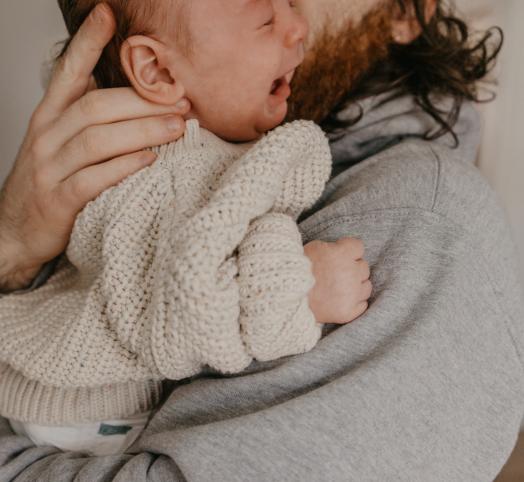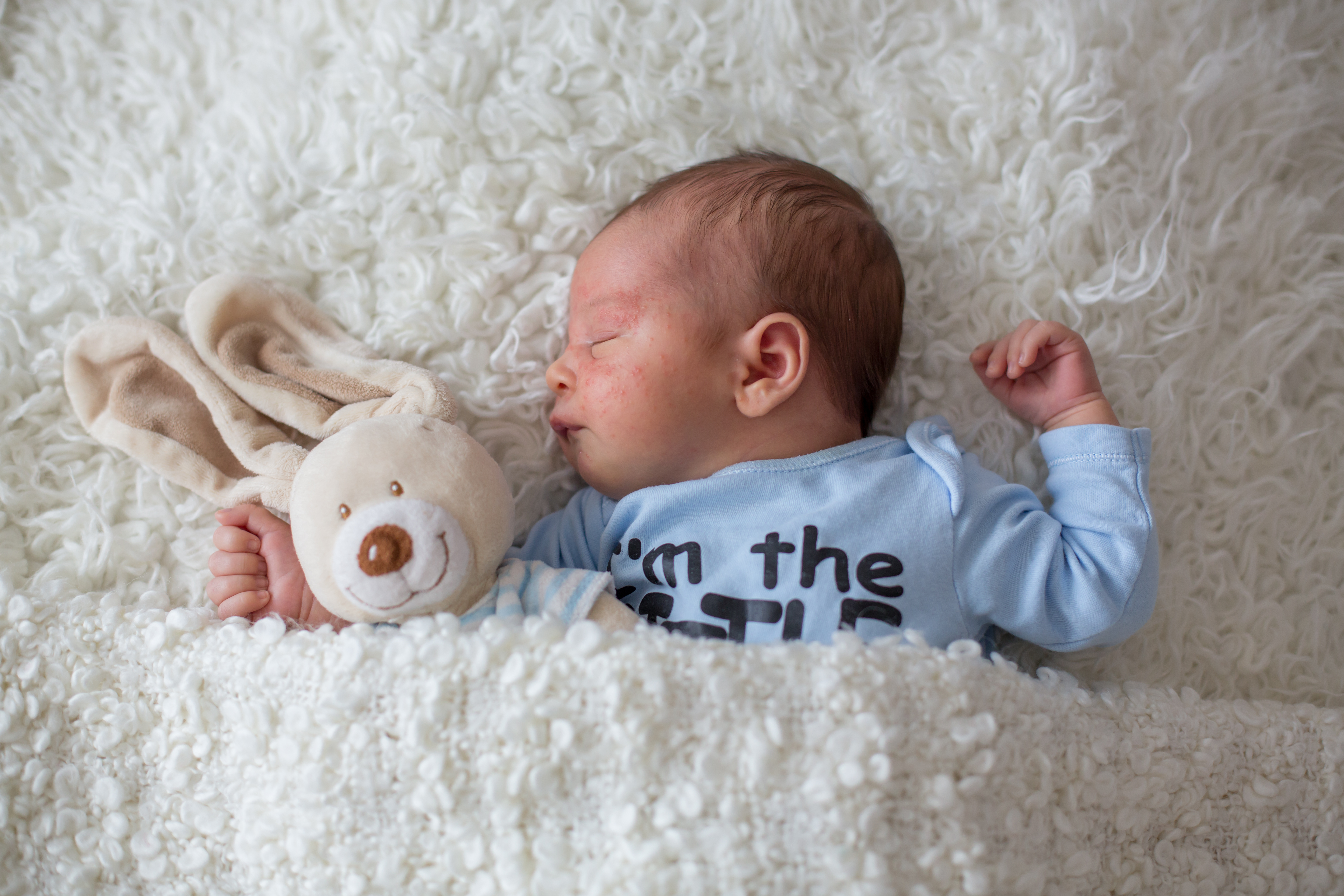How to manage Rashes, Eczema & Other Baby Skin Conditions
Updated on April 11, 2023
Created on August 23, 2022
AU & NZ - Find your nearest pharmacy here
Updated on April 11, 2023
Created on August 23, 2022

Although a newborn's skin may be flawless, it is also sensitive and prone to skin disorders like eczema, dermatitis, rashes, and baby acne.
Skin problems are not just a superficial cosmetic problem. According to Dr. Mark Koh Jean Aan "the skin is the largest organ in the body and its functions are highly crucial to the health of the other organ systems."
The skin is a protective barrier that prevents excessive body fluid and mineral loss. It protects against infections and stops the absorption of harmful chemicals. It also helps in controlling body heat.
A variety of things, including heat, cold, fungus, germs, drooling, allergies, or continuous contact with a wet nappies, can lead to skin issues in babies. Fortunately, the majority of skin disorders in infants are transient, and resolve on their own over time. However, in more severe situations, oral medication, topical steroids, lotions and ointments may be needed to manage the issue.

A kind of rash called heat rash, often known as prickly heat or miliaria, affects babies because their underdeveloped sweat glands are prone to obstruction. In hot, humid regions like Singapore, it is extremely common.
According to Dr. Koh, sweat that is retained beneath the skin causes inflammation and rashes instead of dissipating.
Symptoms: Small, red to clear, pin-pointed bumps, usually over covered sites such as the back and bottom.
Causes:
Excessive perspiration due to hot weather
Dressing a baby too warmly or thick swaddling
Dressing baby in fabrics that don’t allow sweat to evaporate normally
A high fever
Heavy creams and ointments that block the sweat ducts
Management of heat rash
Dress the baby in light clothing
Give baby cool baths
Avoid swaddling
Keep the room cool with air-conditioning and fans
35% of infants get nappy rash during the first year of life. Its prevalence peaked between 9 and 12 months of age.
Symptoms: A red, scaly rash over the areas of the skin.
Causes:
Prolonged contact with urine and stools
Excessive moisture from prolonged use of nappies
Friction from fabric or adhesive tapes
Secondary infection from bacteria or fungus / yeast
Management of nappy rash
Cleanse the bottom area and apply a barrier cream
In severe cases, medicated creams or oral medications may be prescribed
Seborrheic dermatitis, often known as cradle cap, typically appears in the first few weeks of birth and can recur for up to 4-6 months.
"A typical skin fungus or yeast overgrown is cradle cap, it is as a result of stimulation from maternal hormones while the baby is still in the womb. However, in certain infants, it might be a precursor to atopic dermatitis or eczema”, according to Dr. Koh.
Symptoms: Scaly, pink to red patches on the scalp. Sometimes, other areas of the body are also affected, e.g. the neck, armpits and groin. Areas can present with greasy skin covered with flaky white or yellow scales.
Causes:
An abnormal production of oil in the oil glands and hair follicles
Yeast / bacterial infection
Treatment for cradle cap
Shampoo your baby daily using a tear-free shampoo or a medicated shampoo
Use Micellar Water In-Between Baths : Use a baby-friendly micellar water, such as Mustela's No-rinse baby cleansing water with avocado, to keep your baby's skin exceptionally clean on days when they don't get a bath.
Protect Your Baby From The Elements: As we already discussed, the weather can contribute to your baby's dry scalp in both the winter and the summer. Both the heat and sunburn of summer and the chilly, windy winter weather can dry up your skin.
Apply Baby Oil Or Natural Oils: A few drops of Mustela's Baby Massage Oil can help to soften any built-up dead skin on your child's head and will keep their scalp hydrated.
Apply a cradle cap cream: Mustela’s Cradle Cap Cream works to manage and eliminate cradle cap flakes, reduce the likelihood of future recurrence, and soothe your little one’s scalp in the process.
In severe cases, a mild topical steroid cream can be applied on the affected areas
Atopic eczema, also known as atopic dermatitis, is the most common skin condition affecting adults and children, including babies.
“Most children with eczema improve as they get older. However, the condition can recur after months or even years. With good control, many patients with eczema can live healthy, active lives,” says Dr Koh.
Symptoms: Patches of red, itchy, rough and dry skin, small red bumps, red skin, red rash, typically on a baby's cheeks and at the joints of the arms and legs but can be anywhere on the body.
Causes: The exact cause of atopic eczema is unknown. Atopic eczema is an immune reaction and has a genetic basis, being found to run in families. Contributory factors which can act as triggers or worsen the condition include:
Environmental factors such as high temperatures, house dust mites and viral infections
Allergens such as soaps, creams, detergents
Treatment for atopic eczema
Bathe baby daily with cool or slightly warm water and introduce a oil, for the bath
Pat your baby dry after a bath – don’t rub the skin
Apply a moisturiser every day to prevent and control eczema flare-ups
Try wet-wrapping therapy
In severe cases where there is an infection, antibiotics may be prescribed
“There is no cure for eczema but it can be well controlled by minimising triggers, frequent daily use of moisturisers and intermittent use of topical steroids or calcineurin inhibitors,” says Dr Koh.
A newborn baby requires particular handling and care to prevent baby rash and allergic reaction. Dress your baby in light clothing in the summer and avoid thick swaddling, to protect their skin from rashes and other skin disorders. Use gentle cleaners or gel or oil without fragrance.
A newborn baby should be bathed in water that is between 36 and 37 degrees celsius in temperature. This is so that baby's skin doesn't lose its natural protective oils due to hot water. Only 5 to 10 minutes should be spent in the bathtub.
A body cream applied after a bath can protect your baby’s skin and help in the maturation of the skin barrier.
With the right treatment, minor skin disorders like heat rash and nappy rash often go away on their own over time. Topical steroid creams and prescription drugs can be necessary for severe cases.
The barrier function of baby skin is immature and is more porous than that of adults and needs more protection from external influences in order to preserve its cell capital. This cell capital – unique for a whole lifetime - with which the baby's skin is endowed at birth and which allows the skin to regenerate throughout life, is particularly vulnerable during the first 2 years of life.